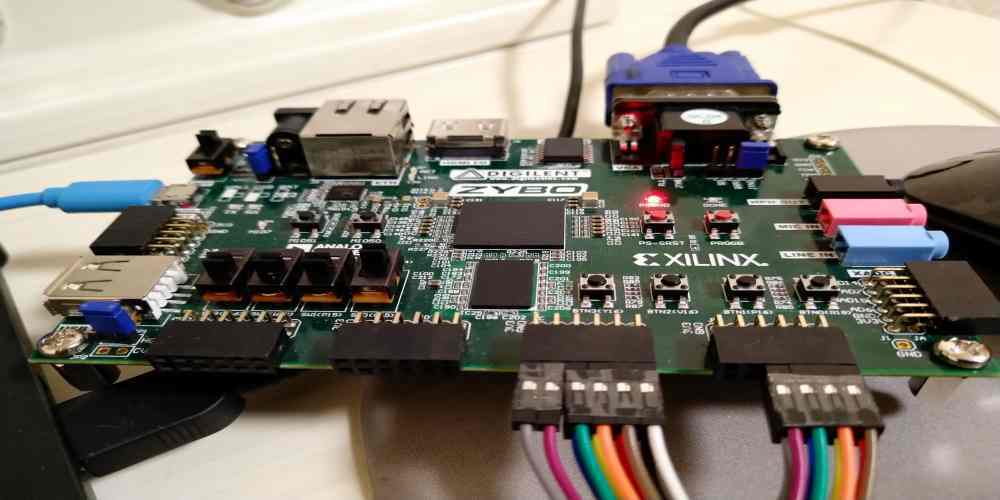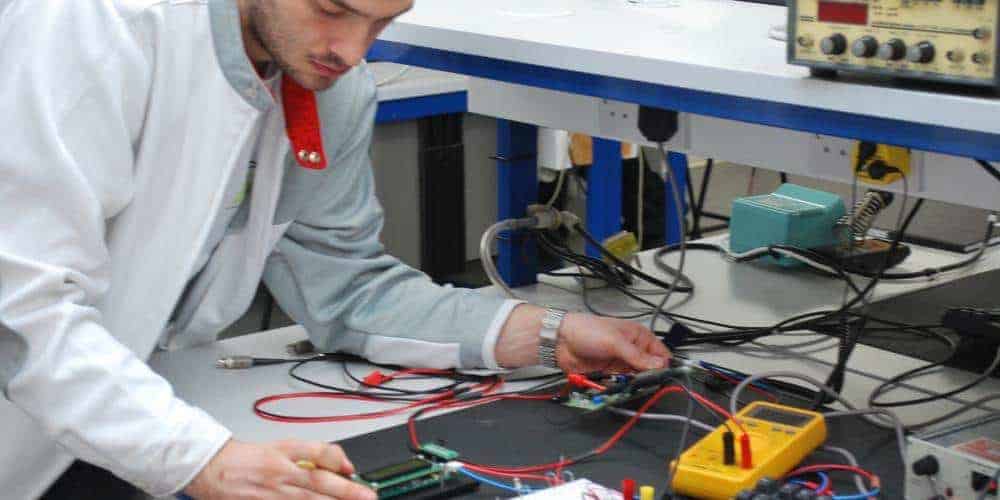The WS2812B is a popular LED that has revolutionized the lighting industry. It is a compact and cost-effective solution that allows for the creation of complex lighting effects. The WS2812B is a surface-mount LED that is integrated with a driver chip. This integration makes it easy to control the LEDs and create complex lighting effects.
When designing a PCB for the WS2812B, it is important to consider the power requirements of the LEDs. The WS2812B requires a 5V power supply and can consume up to 60mA of current per LED. This means that the power supply and traces on the PCB must be designed to handle the current requirements of the LEDs. In addition, the data signal that controls the LEDs must be properly routed to avoid noise and interference. By following best practices for PCB design, it is possible to create a reliable and high-performance lighting system using the WS2812B LED.

PCB Design Considerations
When designing a PCB for the WS2812B LED, there are several important considerations to keep in mind. These include power supply decoupling, signal integrity, and grounding techniques.
Power Supply Decoupling
Power supply decoupling is an important consideration in any PCB design, but it is particularly important when working with WS2812B LEDs. These LEDs require a clean, stable power supply in order to function properly. To achieve this, it is important to include decoupling capacitors on the power supply lines. These capacitors should be placed as close as possible to the LED power input pins.
Signal Integrity
Signal integrity is another important consideration in WS2812B PCB design. These LEDs use a one-wire communication protocol that is sensitive to noise and interference. To ensure reliable communication, it is important to minimize signal reflections and crosstalk. This can be achieved by using appropriate trace widths and spacing, and by placing decoupling capacitors near the LED signal input pin.
Grounding Techniques
Grounding is an often-overlooked aspect of PCB design, but it is crucial for the proper functioning of the WS2812B LED. A solid ground plane should be included in the PCB design, with a low-impedance connection to the LED ground pin. It is also important to ensure that all components on the PCB share the same ground reference.
In summary, when designing a PCB for the WS2812B LED, it is important to consider power supply decoupling, signal integrity, and grounding techniques. By following these guidelines, you can ensure reliable and stable operation of your LED system.
WS2812B LED Basics

The WS2812B LED is a popular choice for designing PCBs that require programmable LED lights. These LEDs are individually addressable, meaning that they can be controlled individually, and can display a wide range of colors. They are commonly used in applications such as decorative lighting, signage, and backlighting.
Here are some basic specifications of the WS2812B LED:
- Voltage: 5V
- Current: 20mA per LED
- Power consumption: 0.3W per LED
- LED type: RGB (Red, Green, Blue)
- Communication protocol: One-wire
- Data rate: 800 Kbps
One important thing to keep in mind when designing a PCB with WS2812B LEDs is the power requirements. Since each LED can consume up to 0.3W of power, it is important to ensure that the power supply can handle the total power consumption of all the LEDs on the PCB.
Another thing to consider is the communication protocol. The WS2812B LED uses a one-wire protocol, meaning that all the data is transmitted over a single wire. This allows for easy integration with microcontrollers and other digital devices.
When designing a PCB with WS2812B LEDs, it is important to follow the recommended layout guidelines provided by the manufacturer. This will ensure that the LEDs work correctly and that there are no issues with signal integrity.
Overall, the WS2812B LED is a versatile and reliable option for designing PCBs with programmable LED lights. By following the recommended guidelines and specifications, designers can create high-quality and functional PCBs that incorporate these LEDs.
PCB Layout Guidelines
When designing a PCB for WS2812B LEDs, it is important to follow certain guidelines to ensure optimal performance. The following sub-sections outline some of the key considerations in PCB layout.
Trace Width and Spacing
The trace width and spacing are crucial for ensuring that the WS2812B LEDs receive a stable and consistent power supply. The power traces should be wide enough to handle the current required by the LEDs, while the spacing should be sufficient to prevent any interference between the power and data traces.
For the power traces, a width of at least 0.5mm is recommended, while a spacing of at least 0.3mm should be used to prevent any interference. For the data traces, a width of 0.2mm is sufficient, but a spacing of at least 0.15mm should be used to prevent crosstalk.
Component Placement
The placement of components on the PCB can also have a significant impact on the performance of WS2812B LEDs. To ensure optimal performance, it is important to place the power supply and decoupling capacitors as close as possible to the LEDs.
Additionally, it is important to ensure that the data line is routed in a straight line from the microcontroller to the first LED, with no sharp bends or corners. This will help to minimize any signal distortion or interference.
Routing Techniques
When routing the PCB for WS2812B LEDs, it is important to follow certain techniques to ensure optimal performance. One technique is to use a ground plane to provide a low-impedance ground reference for the LEDs.
Another technique is to route the data line in a differential pair, with a ground trace running parallel to the data trace. This will help to minimize any crosstalk or interference between the data and power lines.
In addition, it is important to ensure that the data line is terminated with a 330-ohm resistor to prevent any signal reflections or ringing.
By following these guidelines for PCB layout, designers can ensure optimal performance and reliability of WS2812B LEDs.
Testing and Troubleshooting

Once you have designed your WS2812B PCB, it’s important to test and troubleshoot it before moving forward with production. Here are a few steps you can take to ensure your design is working properly.
First, check the power supply. Make sure you are providing the correct voltage and amperage to the WS2812B LEDs. If the voltage is too low, the LEDs may not light up, and if it’s too high, you could damage the LEDs. You can use a multimeter to measure the voltage and amperage.
Next, check the data signal. The WS2812B LEDs use a one-wire communication protocol, so it’s important to make sure the data signal is being transmitted correctly. You can use an oscilloscope to check the data signal. The signal should be a 5V pulse with a duration of 250-1000ns.
If you’re having trouble getting the LEDs to light up, check the wiring. Make sure the power and ground connections are correct, and that the data signal is connected to the correct pin on the WS2812B LEDs.
If you’re still having trouble, you can try using a logic analyzer to monitor the data signal. This can help you identify any issues with the data transmission.
Finally, if all else fails, you can try using a breakout board to isolate the WS2812B LEDs from your PCB. This can help you determine if the issue is with the LEDs themselves or with your PCB design.
In conclusion, testing and troubleshooting your WS2812B PCB design is crucial to ensuring a successful production run. By following these steps, you can identify and fix any issues before they become bigger problems.

